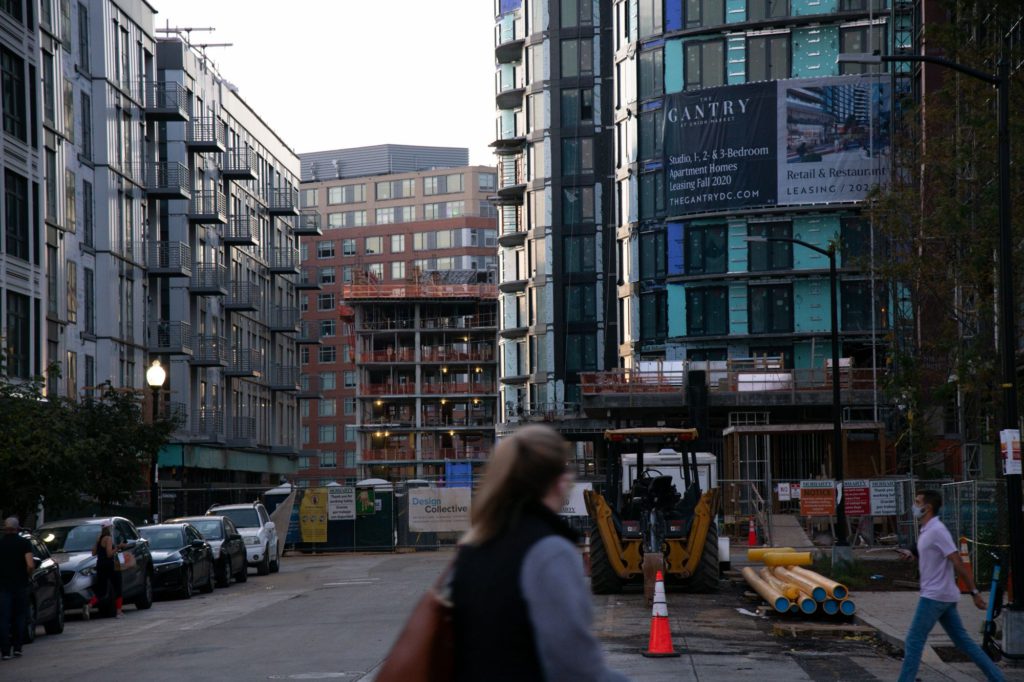(Bloomberg) —
We all make a host of tiny decisions every day that, on their own, have little to no impact on the Earth’s climate. In aggregate, of course, they very much do. Such is the conundrum of individual action versus the world’s largest systemic problem. Little seems to matter, except perhaps the single biggest individual choice: where and how to live.
And I’m not talking about which country or state, for those lucky enough to have such a choice. I’m primarily talking about the single most dominant choice: city vs. suburb. (Living the pastoral life off the land sounds lovely, but is not a viable option for most. Even Henry David Thoreau famously had his mother do his laundry.)
“Choice,” here, is a loaded term. Many if not most such choices are driven by broader forces. That goes for what is deemed socially acceptable or expected — how the number of bedrooms in one’s home tends to be a rather public signal, readily shared, while the length of one’s commute is typically a more private matter, couched as a personal “sacrifice” for just those added bedrooms. Then there is the role of urban and regional planning in shaping our home choices.
Planning is bound up with politics, and most of those politics are local, with communities deciding who should be allowed to live among them and how. Welcome to the wondrous world of exclusionary zoning.
“Wondrous,” of course, is an even more loaded term than “choice.” Suburbs as a whole are far from uniform, but lots of the history of suburbia has been written in the ink of redlining and segregation: deliberate policy choices that excluded entire racial or religious groups. That applies to many U.S. cities as well. Plenty are replete with suburban-style neighborhoods where land is used inefficiently, often exclusively for single-family homes. Most of Atlanta, Houston and Los Angeles, to name a few, fall into this category.
There are lots of factors behind these developments, including the cult of domesticity — with the requisite traditional gender stereotypes of the stay-at-home mom taking care of the single-family house, while dad earns the money downtown to pay for it all. But enough with the stereotypical history. Where to go from here?
In a recent Twitter post Andrej Karpathy, the head of artificial intelligence at Tesla, marveled at “how cool European cities are” and listed some of the reasons why:
I forgot how cool European cities are. More compact, denser, more unique / interesting, cleaner, safer, pedestrian/bike friendly, a lot more pedestrian only plazas with people relaxing / hanging out. A lot more of outside is an outdoor living space, not just transportation space.
— Andrej Karpathy (@karpathy) April 2, 2022
Yep. Not all European cities are created equal, of course. Even the best have plenty of their own problems, including giving too much space specifically to cars. But Karpathy is on to something.
It’s telling that Americans from car-addled places, with the requisite means, like to go to European cities — or Manhattan — on vacation, and happily forego driving for days on end. When there, they splurge on the most central of hotels. Why stay even 10 minutes farther away from where one needs to be? Vacation days, after all, offer limited time.
Yet back home stateside, many see the “solution” to the problems caused by sprawl in a limited way, reflected in Karpathy’s day job: building a better car. Yes, electric vehicles are better than those powered by internal combustion engines. Technofixes are important. But they are indeed just that.
Societal changes are hard. Building better cities is doubly so, due to lock-in effects whereby seemingly small decisions are visible decades hence. Jane Jacobs is rightfully revered as an early urbanist who saved her beloved Lower Manhattan from the expressways of Robert Moses. Those would have handed even more of New York City over to cars, much as other cities had done at the time.
There is no magic lever to fix it all, but one comes close: removing exclusionary zoning and building more housing in cities. Doing so helps ease housing costs where relief is most needed. Transit-rich urban neighborhoods command some of the highest prices for good reason. Demand is high, and supply limited. The answer is to build many more homes in cities.
The Biden administration was right to highlight zoning reform as the first step in easing the burden of housing costs. Costs will not come down overnight, however. Meanwhile, rezoning must not only focus on cities. Making suburbs denser is indeed part of the plan. The most ambitious housing policy in the New York metropolitan area is not found in New York City, but just across the Hudson River in Jersey City.
Urban living cuts CO₂. That much is clear. Building more desirable, dense, mixed-use and largely car-free neighborhoods might be one of the most powerful climate policies. An added bonus: It furthers community and family and could, perhaps surprisingly, help bridge classic partisan divides.
Gernot Wagner writes the Risky Climate column for Bloomberg Green. He teaches at Columbia Business School (on leave from New York University). His latest book is Geoengineering: the Gamble (Polity, 2021). Follow him on Twitter: @GernotWagner. This column does not necessarily reflect the opinion of Bloomberg LP and its owners.
More stories like this are available on bloomberg.com
©2022 Bloomberg L.P.











